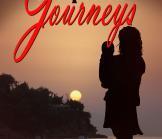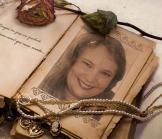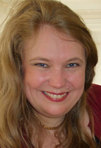Catherine Lind's Blog, page 6
September 1, 2014
Finally out

We are finally there. It took some time but my first novel, Unexpected Journeys is finally out. You can find it on Amazon.
It’s a story about two people, trying to find out who they are and what they want from the future. They both arrive to the Greek island of Spetses.
She is a widow with a small child, trying to figure out how they can start to live again. He is lost between two cultures, two lifestyles. He searches for his roots, in an attempt to figure out who he is so he can be a better father for his little girl. Fate takes them on an unexpected journey.
If you want to try it out, you can read the first three chapters under books.
Tags: bookUnexpected Journeys
August 21, 2014
About Catherine Lind

Catherine Lind has been an author of non-fiction for many years; she has recently started to write fiction and published her first novel, Unexpected Journeys, in August 2014.
"It's something I wanted to do for a very long time. I have always written, in many forms and shapes. People have constantly fascinated me and to combine those two has been a lifelong dream."
Catherine Lind has worked as a negotiator for many years and has an extensive training and knowledge in behavioral science, during the last decade she has taught and written non-fiction.
"I always study people, how they act, what they do and how they think. That's what fascinates me with writing fiction, the opportunity to put people in impossible or difficult situations and see how they would react."
The impossible situation is a large part of the plot in "Unexpected Journeys."
"Here you have two people, scarred by life in very different ways. They would never have met under normal circumstances. Now faith put them in a situation where their usual preferences don’t work. That's the kind of situation that fascinates me."
The step over to fiction was a way to explore these human forces.
"We all react differently, but at the same time most people are more predictable than we want to be. In the impossible situation, ten percent take charge and do something about it. Fiction gives me an opportunity to explore the thoughts and action in a way that I can't do in non-fiction."
Books and words go hand-in-hand and Catherine has a very strong and troublesome relationship with words.
“I’m dyslectic and when I published my first book in 2008, one of the first questions I got was; why become a writer when you are dyslectic.”
It might not be the obvious career choice.
“I think it’s part of the challenge. I always loved words, and I’m a terrific reader – though I can’t really read.”
This definitely is a contradiction. There is a specific part in the brain that most people use when reading, modern research show that dyslectic people doesn’t use this part in the same way.
“Dyslectic people have a tendency to find other ways of solving problems. Find other parts of the brain who can handle the difficult task of understanding letters. For me it’s not about letters, I can’t really understand them. I’m lousy at Scrabble. I read in pictures.”
Catherine says her creative side can imagine what is going on in her mind when she reads.
“Imagine this; the words come in, the logical side of my brain looks at this incomprehensible thing and says – This is not logical, send it cross the hallway to the creative gals, they might know what to do with it. The creative gals get hold of it and says – This is a picture, it means… That’s how my mind works.”
So instead of reading letters, Catherine reads pictures.
“I think it started when I was very young. My parents used to read a lot to me, and we moved very quickly into books for older children. When I was three years old, I read books suitable for six years. Though they read them in the same fashion, with me cuddling in their lap and following along with the words. Same principle as with a picture book, though there the graphic picture of a cat were connected to the sound. So I started to connect the written word with the sound. They became pictures.”
Catherine was four years old when she started to read.
“My parents couldn’t understand how it happened; no one had taught me how to do it. Today I know that I decipher the pictures, not particularly complicated. So I learned on my own.”
So how much does dyslexia complicate her life as an author?
“There are so many modern tools out there today. My first book, in 2008, I didn’t write that, instead I used a voice recorder and had it transcribed. It worked but it was a tough process to edit the material, so I didn’t like it. My second book I wrote on my own, but had help from an editor and proofreader. I liked that better and have stayed with that method since.”
Spell check and other computerized tools are necessary.
“The problem is when the word is spelled correctly but it’s the wrong words. There are many words that totally change their meaning, and usually not in a good way. Since I see them as pictures, I can only see their form – not how the individual letters are combined.”
To solve this she works with a “Blacklist”.
“I do search and replace with common words that I know from experience that I might do wrong.”
One typical word on the Blacklist is “barley” and “barely”.
“To me they look exactly the same, and since I probably never write agriculture, it’s a safe bet to change automatically. I do write cookbooks though, so who knows.”
She believes that her relationship with words would never have been so strong without the dyslexia.
“I think that most things become important when we have to fight for them. I love to write so I just go for it.”
Catherine doesn't see herself in one specific genre.
"I write what I think is fun, so in a way I guess that I mix genres. Hopefully my readers don't mind and read my books from my style of writing and not from a specific genre."
So what can the reader expect from a Catherine Lind story?
"I try to keep my facts straight. I'm a story teller, so I like to show places and people. I don't like to write cruel and dark stories. That doesn't mean that all my stories have a happy-ever-after-ending."
AboutCatherine



